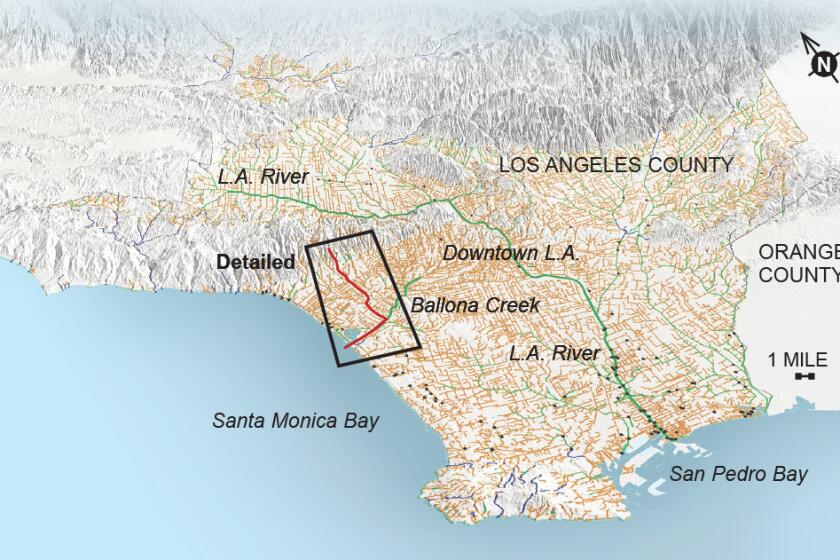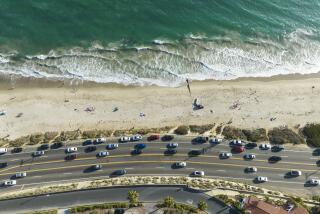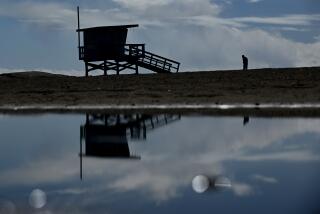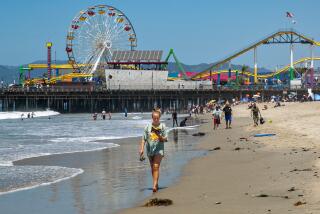It just rained (again). Is it safe to swim in the ocean?
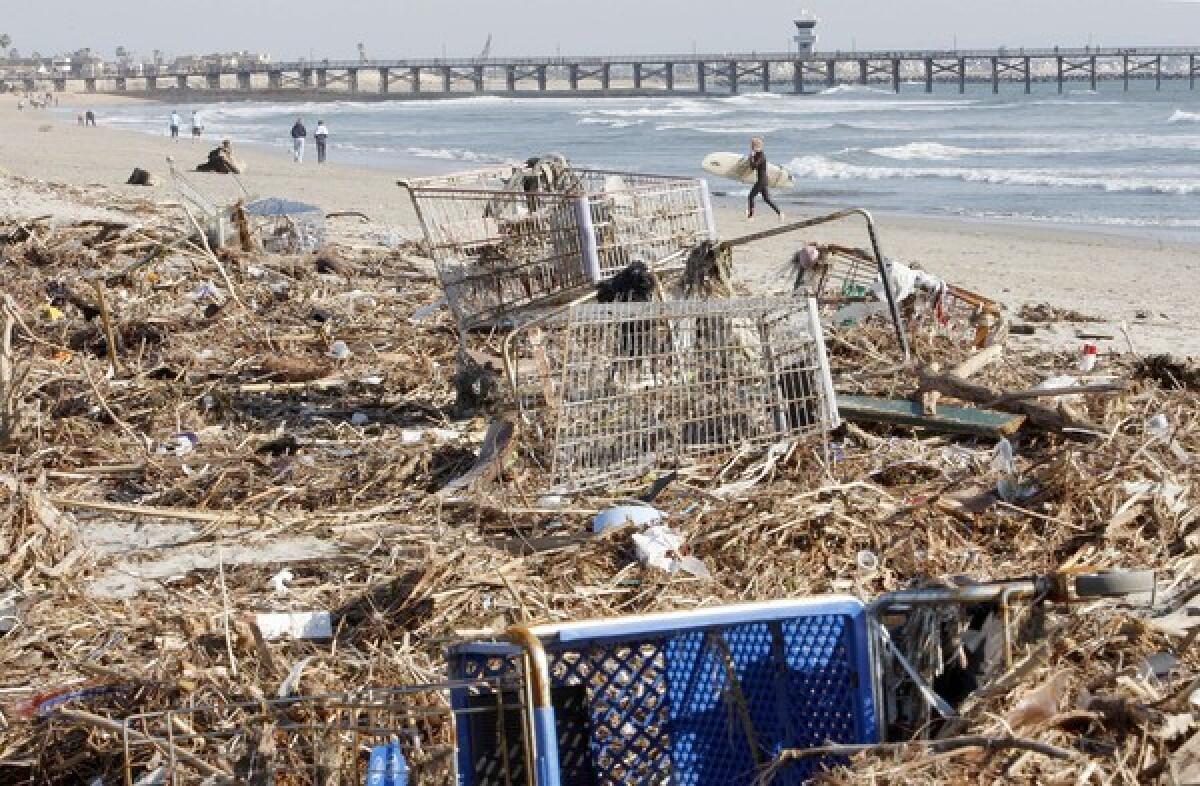
The skies are clear, the air is fresh, and Southern California feels like Southern California again after more rain and snow pelted down this week. But is it safe to go to the beach? Here are some precautions and commonly asked questions about rain and pollution.
How does rain make our ocean and beaches more polluted?
Imagine Los Angeles County, framed by its iconic foothills and snow-capped mountains, as a giant bowl tilted toward the sea. Whenever it rains, water rushes off rooftops and down streets and sidewalks — picking up any trash, pesticides, dog poop and car tire residue in its way. Unlike our sewage, which is filtered through treatment facilities before it’s discharged, this mix of rainwater and debris flushes straight into the ocean through a network of storm drains and concrete-lined rivers.

Urban runoff, in fact, is L.A. County’s greatest source of water pollution.
Even with a little bit of rain, Ballona Creek piles up with countless pieces of plastic cups, fast-food containers, spray-paint cans and chip wrappers. Across the Southland this winter, heaps of litter have collected along beaches and near storm drain outfalls.
How much runoff is there after a storm?
An average 1-inch storm creates about 10 billion gallons of runoff in county storm drains, according to water quality scientists. That’s 125 million bathtubs’ worth of polluted water.
Wait, so what good are these storm drains?
Engineers back in the day were mostly worried about flood control. Intense rainfall in 1938 inundated swaths of low-lying towns and farmland between downtown Los Angeles and Long Beach. Bridges were overtopped, dams hit capacity, and swollen creeks washed over Venice, Echo Park and other parts of the city. At least 96 people died across Southern California.
Explore this map of L.A. County’s storm drains.
Creating a system that could move all this water out to sea as quickly as possible was the top priority. Controlling flash floods from heavy rainfall has improved significantly, but an unintended consequence has been that the accompanying trash and bacteria now flushes into the ocean completely untreated.
Efforts in recent years to better manage this runoff have made little progress, according to a new report this month by Heal the Bay, an environmental nonprofit group.
So is it safe for people to swim in this water?
Swimming in polluted water increases the risk of skin rashes, ear and upper respiratory infections, and other illnesses such as the stomach flu.
A good rule of thumb is to wait 72 hours after it rains before going into the ocean. Some scientists recommend five days, especially if the beach is close to an area where the river or an outfall dumps into the ocean.
In general, beachgoers are urged to stay at least 100 yards away from storm drains, piers or enclosed beaches with poor water circulation. Studies have found that people are much more likely to get sick from swimming in front of a flowing storm drain than from swimming in open water.
More to Read
Sign up for Essential California
The most important California stories and recommendations in your inbox every morning.
You may occasionally receive promotional content from the Los Angeles Times.
